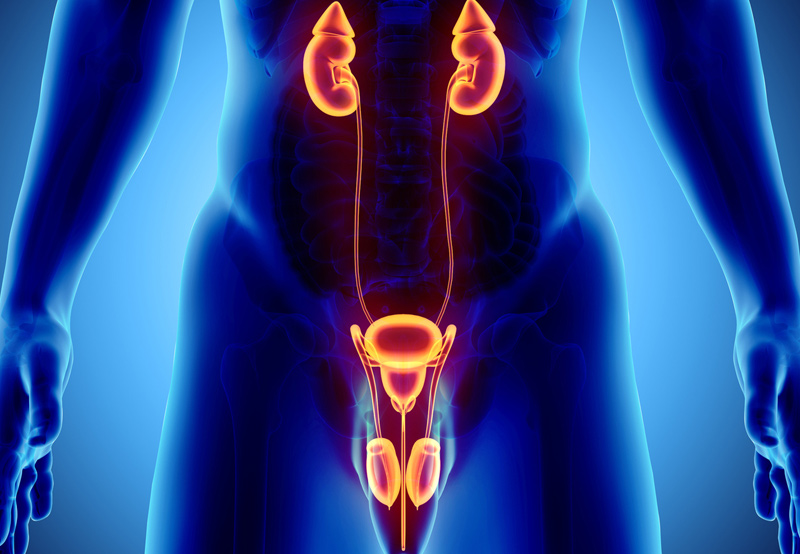

The artificial urethral sphincter (AUS) is a treatment option for men diagnosed with stress urinary incontinence (SUI).
What is Stress Urinary Incontinence?
SUI is the involuntary loss of urine during physical exertion, such as sneezing, laughing, coughing, or changing position. The condition can have a negative impact on daily life, placing a burden on financial relationships, increasing the risk of depression, and causing financial distress.

Risk Factors for Stress Urinary Incontinence
Damage to the internal sphincter (bladder neck and prostate complex) and the external sphincter may lead to SUI in men. Radical prostatectomy is the most common cause of SUI in men. SUI may also be caused by dysfunction of the external sphincter due to pelvic fracture urethral injury (PFUI), radiation, pelvic surgery, transurethral prostate surgery for benign disease, congenital conditions, and traumatic and acquired myelopathies.
SUI in the general male population is low, but is higher among men who have undergone prostatectomy.
Diagnosing and Evaluating SUI in Men
The physician will begin by reviewing the patient’s medical history and conducting a physical exam. A review of medical history can help the physician determine the type and severity of incontinence and its impact on the patient’s daily life.
The patient may also need to take a pad weight test and keep a voiding diary to help the physician assess the severity of incontinence and bladder function. A voiding diary will track functional bladder capacity, urination frequency, and subjective incontinence episodes. It’s important to evaluate bladder function and storage capacity, especially if the patient has neurologic conditions or a history of pelvic radiation.
During the physical exam, the physician will evaluate inguinal hernias, prior surgical incisions, and the patient’s perineal or groin skin. The standing test may also be done.
Patients will need to undergo urine analysis and culture prior to undergoing surgery. Urodynamic testing (UDS) may also be done to assess bladder function, stability, and capacity. UDS can provide invaluable information about a patient’s condition if they have a history of radiation, prior voiding dysfunction, prior bladder surgery, or prior failed incontinence treatment (sling or sphincter).
Patients who plan to undergo surgery will need to complete a cystoscopy to detect obstructive lesions and bladder pathology, and visualize the external sphincter coaptation.
Surgery for Men with SUI
Men diagnosed with SUI may need an artificial urethral sphincter. This implantable device has three parts:
- A fluid-filled cuff (the artificial sphincter), surgically placed around the urethra
- A fluid-filled, pressure-regulating balloon, inserted into the abdomen
- A pump inserted into the scrotum
The artificial urethral sphincter cuff is filled with fluid, helping keep the urethra closed and prevent leaks. When the patient presses on the pump, the fluid in the cuff is transferred to the balloon reservoir. This opens the patient’s urethra, allowing urine to flow. Once the patient has finished urinating, the balloon reservoir automatically refills the urethral cuff in one to three minutes.
Artificial sphincter surgery can treat SUI or significantly improve urinary control in more than 70% of men diagnosed with SUI. Prior radiation treatment, other bladder conditions, and scar tissue in the urethra may impact results.
